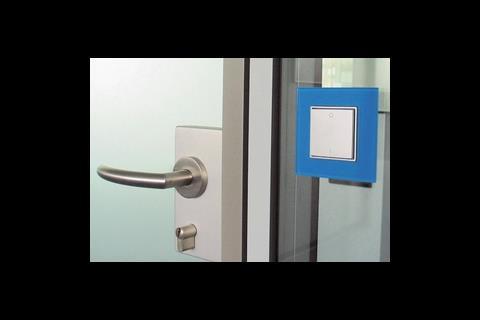Self-powered wireless technology, making life simpler as well as saving energy, kicks off our look at facilities management
Intelligent building automation is now an essential component of energy economy, and wireless switches and sensors greatly simplify the cabling needed to customise a building. However, battery-powered technology presents its own problems.
Switches and sensors are often bulky because of the integral batteries, and facilities managers have to replace these regularly to protect against a power outage. Also, there is a risk of degraded operating reliability in large wireless installations in small spaces.
Wireless sensors without batteries
EnOcean’s battery-free wireless technology is the next step. It can operate without maintenance because it has no batteries.
Since 2001 the company has been developing wireless sensor modules that obtain their current from the energy of their surroundings. Using power-saving electronic circuitry and an extremely short wireless telegram, EnOcean offered the first light switch that generated its energy solely through finger pressure.
The signal, sent in the 868MHz frequency band, lasts for less than a millisecond, making it about 100 times shorter than the signal of a conventional wireless switch. For greater transmission security the data telegram is repeated twice within about 30ms.
Hundreds of wireless switches and sensors can be installed in tight spaces because statistics show that even 200 wireless sensors transmitting once a minute could only result in a data collision at every 10,000th transmission. Wireless modules are compact and low-profile to fit smoothly into available ranges of switches. The EnOcean Easyfit universal switch insert measures only 55 x 55mm with a single or double rocker, for instance, and is compatible with frames from Berker, Gira, Jung and Merten. The switch can also be fixed to a cabinet or door frame.
EnOcean has developed power-saving wireless modules for numerous other applications, from room thermostats with temperature presetting to maintenance-free wireless window contacts to switches for roller shutters in car workshops. They obtain energy from a tiny solar cell measuring 13 x 35mm.
The technology has even found its way into window handles from Hoppe: these draw their energy from the turning of the handle and can signal to an alarm system that a window is open or tell a climate control system to cut heating.
Another basic principle for harvesting energy that EnOcean is exploring is the difference between temperatures. Soon, there will be sensors to detect and wirelessly transmit once a second the heating energy given off by a radiator. They will generate the current they need from the temperature difference between the radiator and the surrounding air. In trials this worked at temperature differences of just 4ºC.
Interface with intelligent building automation
EnOcean wireless sensors have a range of up to 300m in the open or 30m through walls and ceilings inside buildings. For reception of data telegrams in simple installations there are single- or dual-channel switching actuators or lighting dimmers that can be housed in a conventional installation box.
Compact shutter actuators for direct attachment on the actuating means are available. Receiver modules have also been developed for DIN rail fitting in a multiple actuator.
For large offices, medical and industrial use, EnOcean has developed wireless receivers that interface with very different, intelligent automation solutions. These range from EIB/LON gateways to wireless adapters with an RS232, RS485, USB or ethernet interface.
ABB Gebäudetechnik, Beckhoff, Siemens, Thermokon, Wago and Wieland offer EnOcean wireless receivers for their automation systems. For special purposes EnOcean has developed bidirectional receiver modules to enhance wireless range in larger buildings or to report back switching operations in safety-relevant applications.
Source
Building Sustainable Design
Postscript
For more information, contact www.enocean.com
Original print headline: "Batteries not included" (Building Services Journal, January 2008)
























No comments yet